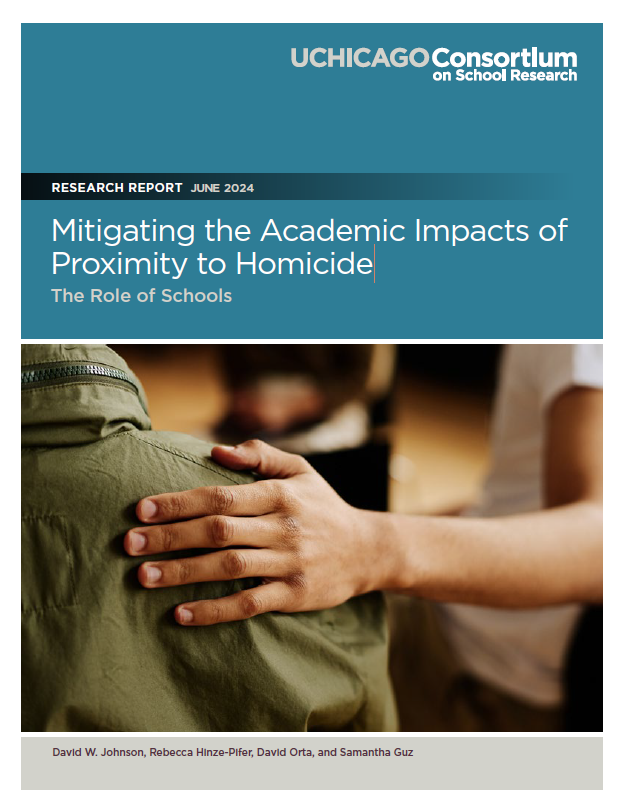1. What is the extent, distribution, and impact of living in close geographical proximity to violence on CPS students’ performance in schools? How do proximity to violence and its impacts on young people vary geographically and for particular groups of students, specifically students of color and those living in communities with high levels of poverty?
2. To what extent is there evidence whether schools can insulate or protect students from the negative effects on academic and behavioral outcomes of living in close proximity to violence, so as to support students’ health and wellness?
3. What elements of school climate and organization are characteristic of schools that appear to protect students against the negative impacts of proximity to violence on academic and behavioral outcomes?
4. How do adults working in schools that mitigate the impact of living in close proximity to violence understand and describe their work?
Community violence can have traumatic effects on young people, presenting daunting challenges for families and school educators working to support students’ growth, development, and achievement in school. It is critical to understand its effects on students and consider what schools can do to mitigate those effects, while working to reduce the prevalence of homicide and gun violence in the broader society.
This report offers evidence that schools can, and do, mitigate the negative impacts of adversity that young people experience. At the same time, this is complex, resource-intensive, and emotionally-taxing work—requiring time, resources and intentional strategies.
Key Findings
- The experience of living in close geographical proximity to homicide varied considerably for students across Chicago.
- Living in close geographical proximity to homicide negatively affected students’ academic performance.
- Some schools mitigated typical negative effects of living in proximity to homicide on academic performance.
- Schools that mitigate the negative effects of living in close geographic proximity to homicide on students’ academic outcomes were characterized by strong, positive school climates across a range of measures, including engaging instruction and trusting, connected relationships among students and between students and adults.
- Systems, structures, and routines that coordinate the support adults provide, center students, and emphasize connection and relationship between adults and young people were vital tools for the educators, administrators, and school staff interviewed.
Key Considerations
- Greater public investment in addressing the epidemic of gun violence and the broader, longstanding historical disinvestment in communities of color throughout the city is needed for more educational equity.
- Intentional, coordinated, and sustained efforts of dedicated adults in schools can address harm to students and promote their resilience.
- Deep, sustained effort in building and sustaining strong, collaborative, and trusting relationships among adults in schools can help make schools more responsive and more effective at mitigating the negative impact of violence.
- Strong, supportive, and trusting relationships between educators and students are a crucial resource for protecting students from harm and promoting resilient school communities.
- Responsive, resilient school communities do not emerge from a single initiative, require substantial resources, and demand sustained and hard work in the face of immensely difficult circumstances.






